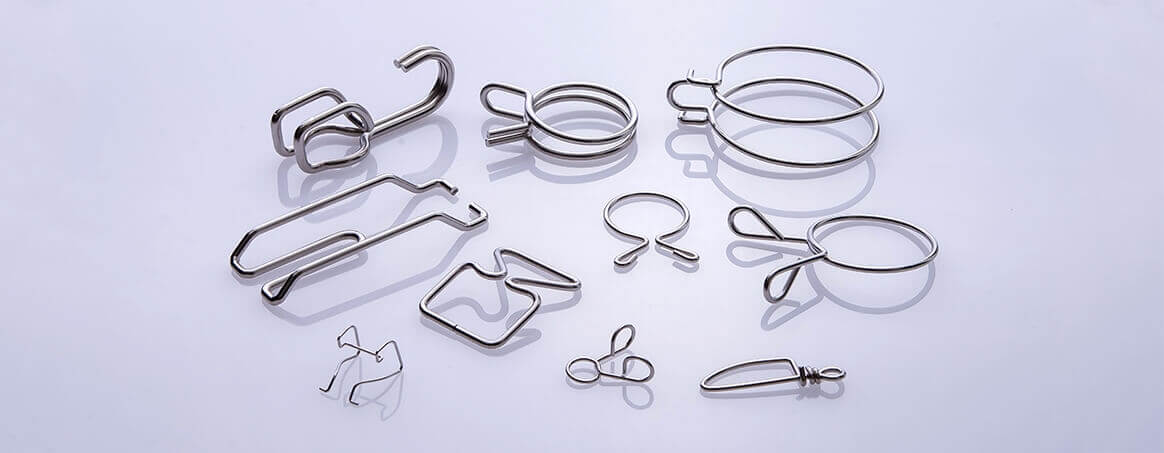Wire Forms

What is a wire form
Among all spring types, wire forms have the most unlimited array of sizes and configurations with the highest possibility of taking almost any form, and can range in size from very small to very large. Wire forms usually require the wire material to be straightened before an external force is applied to form the wire into various possible shapes with the use of CNC machines. The wire could be bent, cut with or without an angle, wound right/left, braided, shaped with closed coils. Any additional components as per customer requests can be attached to a wire form in order to create a custom shape designed for a specific application.
Applications of wire forms
Due to its versatility, wire forms can be used in almost every industry and any possible applications such as electronics, automotive, HVAC, medical devices, construction, petroleum, aerospace, agriculture, and many more. The material selected for wire forms usually depends on the final application of the industry and external environmental conditions. Typical materials include stainless steel, aluminum alloy, steel alloy, spring steel, black steel wire, brass, etc.
Assembly of wire forms
Since a wire form can take almost any shape, size and configuration, it is difficult to specify its assembly method. Wire forms generally have custom ends that are attached to intended devices for assembly with the main bodies constructed for specific jobs.
Elements of manufacturing wire forms
1. The specification and shape must be clarified first via thorough communications
2. The best material must be carefully selected based on environmental conditions such as temperature, humidity, etc.
3. The most suitable CNC machine tool must be determined or created for production
The various shapes of wire forms make manufacturing process quite a challenge for the designer who must be experienced to adjust designs and production methods for any unexpected changes. Given each machine has its limitations in movements, not all manufactures of custom wire forms can be completed at once by the same mechanical tooling. When additional manual operations are required, the original plan for budget control and mass production could be more or less compromised. The designers and engineers should communicate adequately in the early phase of design in order to facilitate smoother operations and budget management for the ensuing production.



